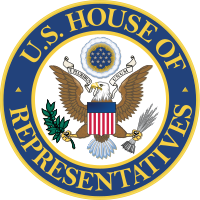
Photo from wikipedia
At least 2.3 million people in the U.S. have an opioid use disorder, less than 40% of whom receive evidence-based treatment. Buprenorphine used as part of medication-assisted treatment has high… Click to show full abstract
At least 2.3 million people in the U.S. have an opioid use disorder, less than 40% of whom receive evidence-based treatment. Buprenorphine used as part of medication-assisted treatment has high potential to address this gap because of its approval for use in non-specialty outpatient settings, effectiveness at promoting abstinence, and cost effectiveness. However, less than 4% of licensed physicians are approved to prescribe buprenorphine for opioid use disorder, and approximately 47% of counties lack a buprenorphine-waivered physician. Existing policies contribute to workforce barriers to buprenorphine provision and access. Providers are reticent to prescribe buprenorphine because of workforce barriers, such as (1) insufficient training and education on opioid use disorder treatment, (2) lack of institutional and clinician peer support, (3) poor care coordination, (4) provider stigma, (5) inadequate reimbursement from private and public insurers, and (6) regulatory hurdles to obtain the waiver needed to prescribe buprenorphine in non-addiction specialty treatment settings. Policy pathways to addressing these provider workforce barriers going forward include providing free and easy-to-access education for providers about opioid use disorders and medication-assisted treatment, eliminating buprenorphine waiver requirements for those licensed to prescribe controlled substances, enforcing insurance parity requirements, requiring coverage of evidence-based medication-assisted treatment as essential health benefits, and providing financial incentives for care coordination across healthcare professional types-including behavioral health counselors and other non-physicians in specialty and non-specialty settings. SUPPLEMENT INFORMATION This article is part of a supplement entitled The Behavioral Health Workforce: Planning, Practice, and Preparation, which is sponsored by the Substance Abuse and Mental Health Services Administration and the Health Resources and Services Administration of the U.S. Department of Health and Human Services.
Journal Title: American journal of preventive medicine
Year Published: 2018
Link to full text (if available)
Share on Social Media: Sign Up to like & get
recommendations!